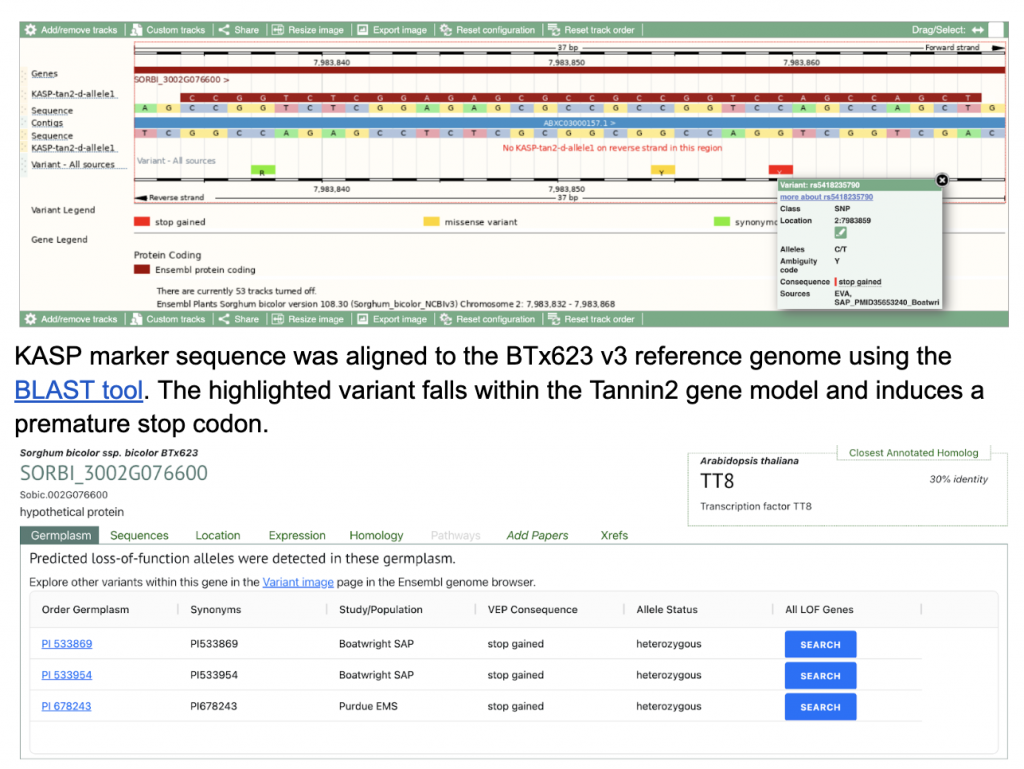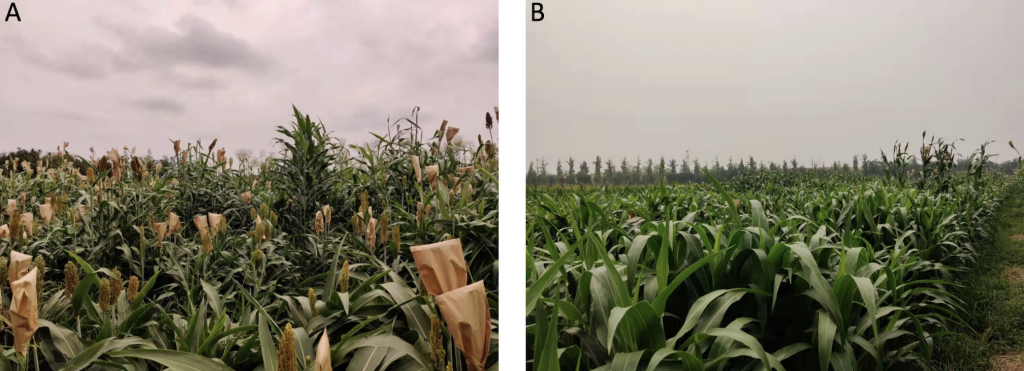Sorghum, a vital crop with diverse applications ranging from food production to bioenergy, exhibits considerable variability in condensed tannin content, impacting both its utility and nutritional value. Previous studies have identified key genes, Tannin1 and Tannin2, governing tannin presence in sorghum grains. Researchers from Shandong Agricultural University, the USDA-ARS and Shandong Academy of Agricultural Sciences examined 421 sorghum accessions, leading to the discovery of three novel recessive alleles within these genes. Notably, the tan1-d allele harbors a 12-bp deletion, while tan1-e possesses a 10-bp deletion in Tannin1. Meanwhile, the tan2-d allele, predominantly observed in Chinese varieties, features a C-to-T transition causing a premature stop codon in Tannin2. Leveraging these findings, Kompetitive Allele-Specific Polymerase assays (KASP) were developed for efficient genotyping. By employing KASP assays targeting these alleles, researchers can efficiently screen large sorghum populations, enabling the selection of desired traits for specific end-uses. KASP offers valuable insights into sorghum domestication and provides practical tools for breeding programs aimed at modulating tannin content. These findings underscore the importance of molecular tools in advancing sorghum breeding programs, bridging the gap between genomic research and practical applications for crop improvement. Overall, this study sheds light on the complex interplay between genetics and phenotypic traits in sorghum, paving the way for tailored breeding strategies to meet diverse agricultural and industrial needs.
SorghumBase examples:
The genes underlying B1 and B2 have been identified as Tannin1 (Tan1, Sobic.004G280800) encoding a WD40 protein, and Tannin2 (Tan2, Sobic.002G076600) encoding a bHLH transcription factor. (sorghumbase genes search)

Reference:
Zhang W, Benke R, Zhang X, Zhang H, Zhao C, Zhao Y, Xu Y, Wang H, Liu S, Li X, Wu Y. Novel allelic variations in Tannin1 and Tannin2 contribute to tannin absence in sorghum. Mol Breed. 2024 Mar 16;44(3):24. PMID: 38495646. doi: 10.1007/s11032-024-01463-y. Read more
